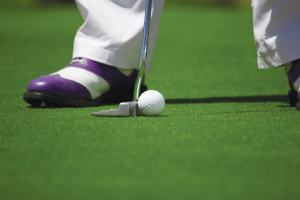Most beginners get excited about hitting the ball as far as possible but not so much about practicing their putts. And yet, improving your putting skills is as critical as improving your driving skills, if not more.
After all, almost half of the strokes you take in a round are putts, so if you’re not good at putting, you can’t expect to score well. To become a better golfer, you must practice your putts.
As you work on perfecting your stance and other putting techniques, you might also consider upgrading your equipment. Quality gear can make a difference in your game, especially for beginners. If you’re looking to invest in new clubs or accessories, a golf town coupon code could help you save on essential golfing items. Remember, while good equipment is helpful, mastering the fundamentals is key to improving your putting skills.
These golf-putting tips for beginners will help you get started.
Choose a putter that you really like
If you already own a putter you love, there’s no need to add another to your collection. But if you don’t have a putter yet or don’t like your current putter, take a moment to choose a good one.
You need to consider different factors to find the right putter for you. A putter has to feel right when you hold it and hit a ball with it. It has to help you get into a proper putting posture, and you have to like how it looks. If you’re on a budget, you can shop for used putters.
Try different putting grips until you find the right one
There is no right or wrong way to hold your putter. Golfers use different grips, such as a normal grip, a lead hand low grip, an armlock, or a claw grip. If you’re unsure of which grip you prefer, try all of them and pay attention to how they feel. This will help you improve your odds of breaking 80 in your final score. Also, this is the method to help you find your favourite grip.
Be mindful of your posture
A good putting tip is to always mind your posture. Keep your feet shoulder-width apart and bend forward from the hips. Let your arms hang straight down under your shoulders, with a slight bend in your elbows.
Starting with the right posture will help you hit better putts over time. Don’t forget to keep your eyes on the ball after visualizing the path you want it to take.
Align your body correctly before putting
Perfecting your posture also means perfecting how your body aligns with your target. Your shoulders and forearms should parallel your ball’s target line as you putt. As for your spine, it should be straight instead of leaning toward your target.
Developing the habit of keeping the same posture will help you become a more consistent putter. If you need to, practice your alignment while looking in a mirror before heading to a golf course.
Work on achieving a smooth and controlled stroke
You should focus on a smooth and controlled stroke as you practice your putts. Ideally, your stroke rate should always be consistent, no matter what you intend your putt to be.
To improve your stroke, get in position and place one tee a foot behind your ball and another a foot and a half in front of it. Practice your stroke without hitting the ball. Your backswing should reach the first tee, and your follow-through should reach the second one. Remember to keep your forearm straight instead of just following through with your putter head.
Learn some putting drills and practice them often
You can’t rely on golf putting tips for beginners if you’re not dedicated to practicing your putts as often as you can. To improve your putting skills, you must do them regularly. A helpful way to make practice more engaging is to learn a few different putting drills and add them to your routine.
Putting gate drill
Place a ball on the green and create a gate by placing two tees on each side of the strike zone. This gate should be wide enough for your putter head to strike the ball.
Next, hit the ball. If your putter is angled correctly, the tees will not move. However, if they fall, you must try again until hitting the ball at the right angle comes naturally.
Clock Drill
Place 12 golf balls in a circle around a hole, 3 feet away. Start at noon and try to get this ball into the hole. After you succeed, you can move on to the 1 o’clock ball and keep practicing until you have completed your golf ball clock. Place the balls one foot further from the hole when this becomes easy and start again.
If you want to add more drills to your routine, ask your friends to show you their favourite ones. You could even turn it into a fun competition by being the first to complete a full drill.



